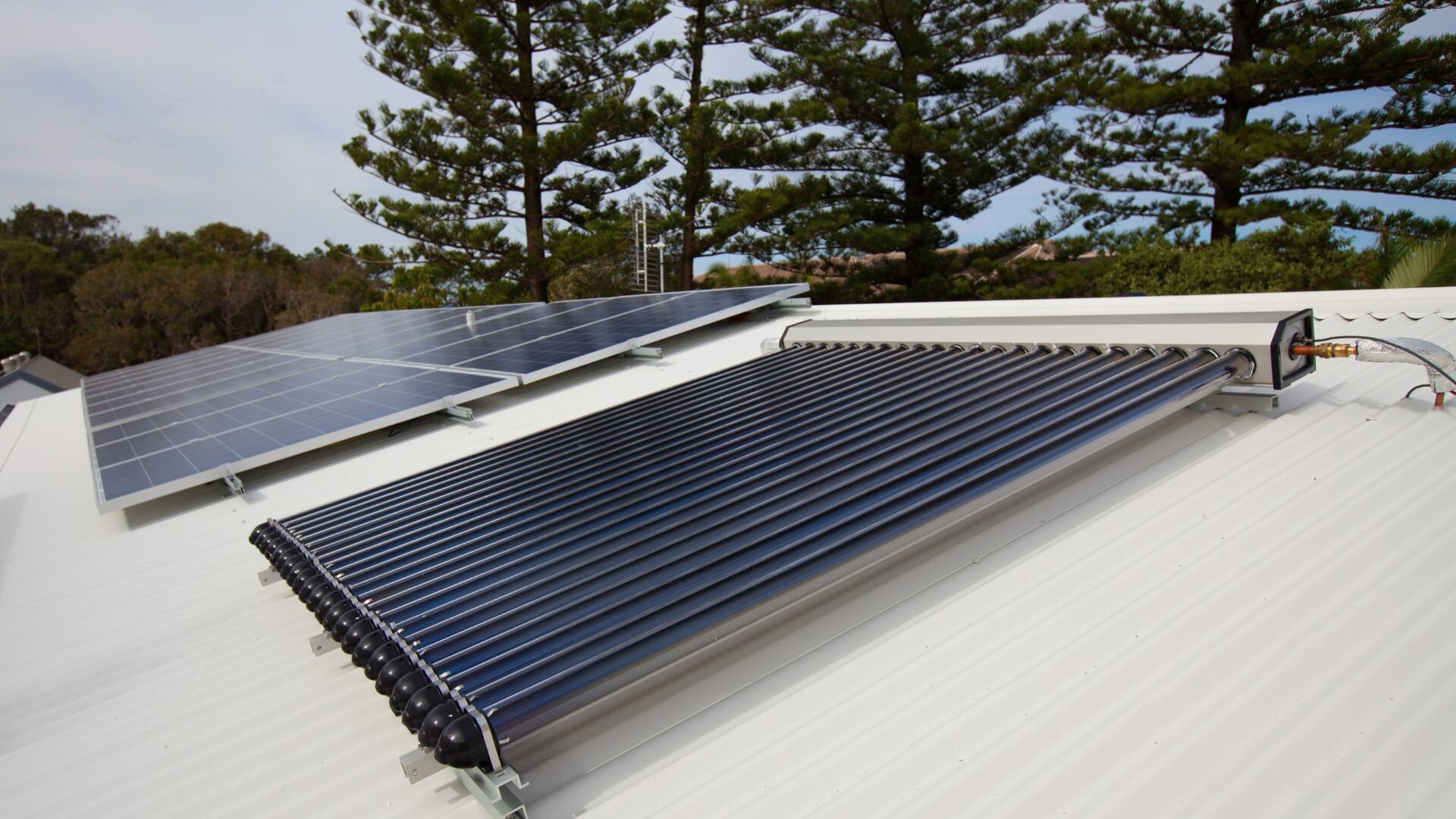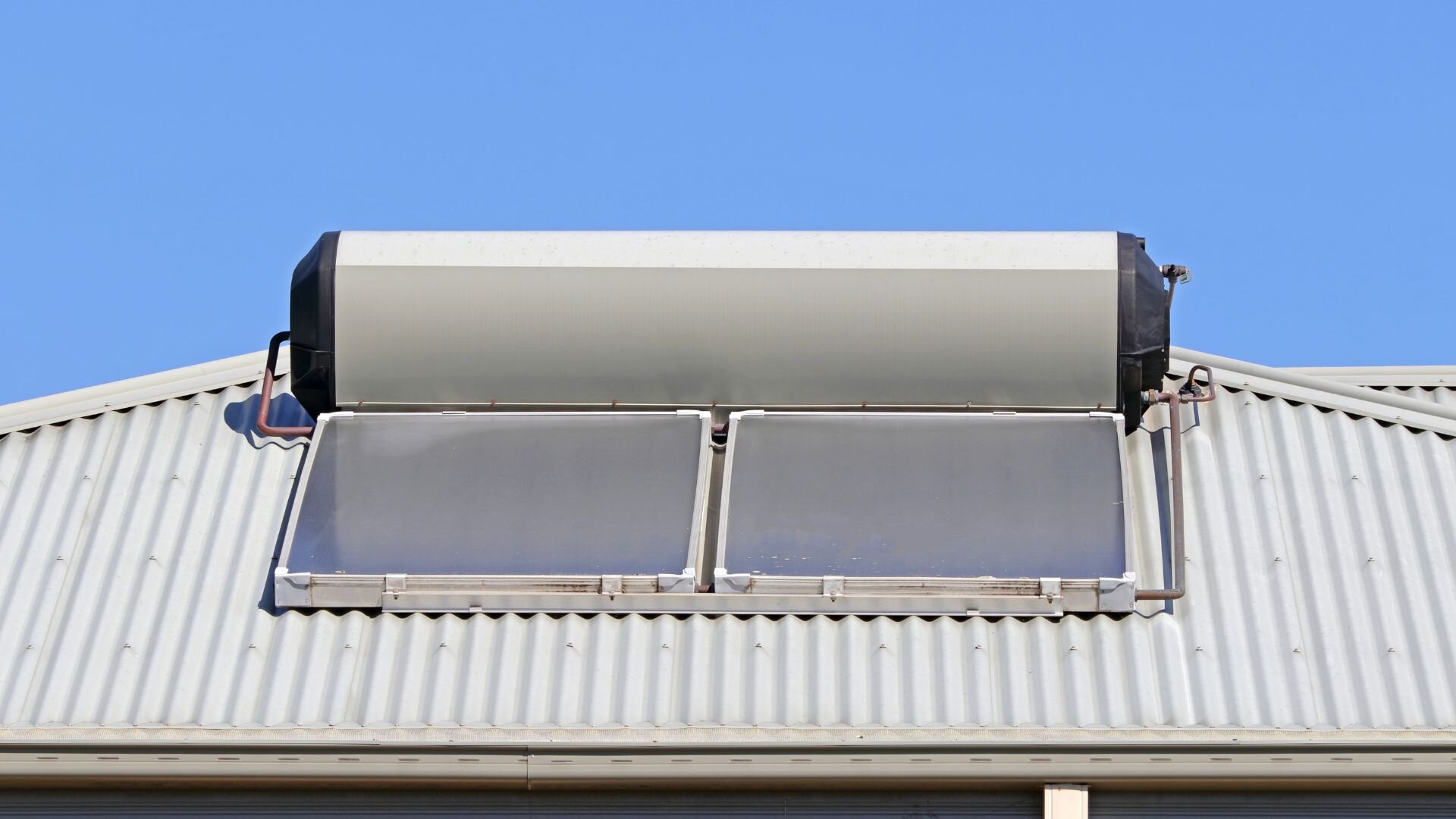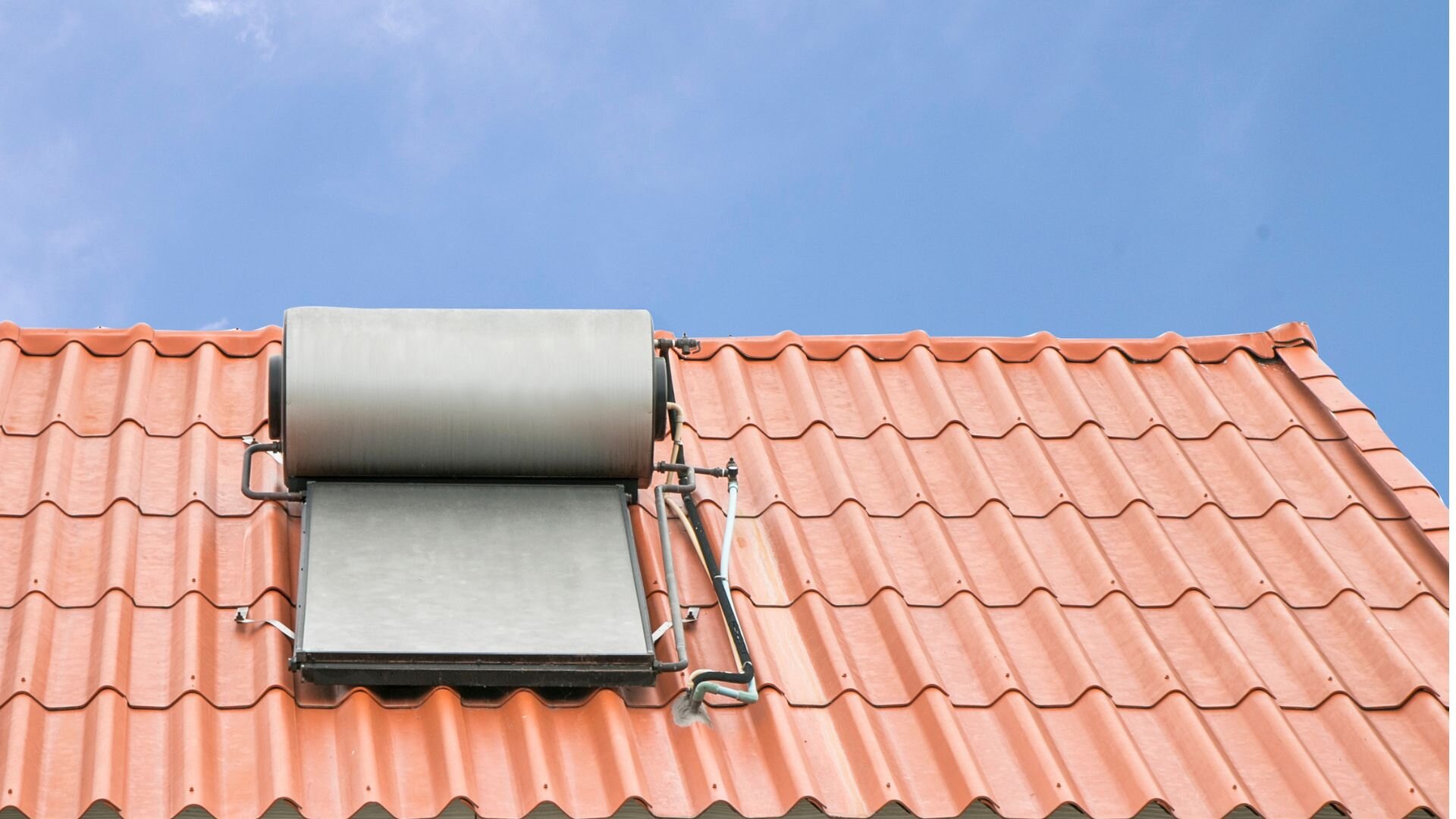Did you know that Australians can slash their hot water bills by up to 80-90% with solar? Solar hot water systems harness the sun’s energy to heat water for your household, offering substantial cost savings and environmental benefits.
These systems utilise solar collectors, typically installed on your roof, to capture sunlight and warm water stored in a tank, reducing your reliance on traditional electric or gas water heaters. Making the switch to solar hot water can significantly lower your energy bills while decreasing your carbon footprint.
To ensure a smooth installation process, it’s essential to assess your roof’s suitability, allocate adequate space for the storage tank, and plan the pipe run to seamlessly connect the system to your existing water supply. Solar hot water technology benefits your wallet and contributes to a cleaner, more sustainable future for Australia. Embracing this eco-friendly solution can help you save money and reduce your environmental impact in the long run.
Roof Assessment for Solar Hot Water Installation

Sun Exposure
Assessing your roof is crucial when considering your home’s solar hot water system. A thorough evaluation of your roof’s sun exposure, age, condition, available space, and pitch will help determine if it’s suitable for a solar hot water installation.
Firstly, consider your roof’s sun exposure. A south-facing roof is ideal for optimal sunlight capture, ensuring solar collectors can heat your water efficiently. However, east or west-facing roofs may also work, albeit with slightly reduced efficiency compared to a south-facing installation.
Roof Age and Condition
Next, evaluate the age and condition of your roof. A structurally sound roof is essential for safely supporting the weight of the solar collectors and withstanding the installation process.
If your roof is over 10 years old or shows signs of wear and tear, it’s wise to have a professional inspect it before proceeding with the installation. Addressing any necessary repairs or upgrades beforehand can prevent future issues and ensure your solar hot water system performs optimally.
Available Roof Space
Solar collectors typically require an area of approximately 29 – 32 m2 of roof space. Take a close look at your roof and consider any potential limitations due to its size or obstructions like chimneys, skylights, or vents. Discuss these factors with your installation team to determine the best placement for your solar collectors.
Clearance Requirements
Adequate clearance around the solar collectors is another important consideration. Ensure there is at least 0.6m of space surrounding the collectors to allow for proper maintenance access. This clearance also helps prevent shading from nearby objects, which can hinder the performance of your solar hot water system.
Roof Pitch Considerations
The pitch of your roof can also impact the installation process. Low-pitched roofs may present challenges when connecting pipes in the attic space. Discuss any potential limitations with your installation team, as they may need to adapt their approach or use specialised equipment to ensure a proper and efficient installation.
Building Codes and Regulations
In addition to these factors, it’s essential to consider local building codes and regulations when preparing your home for a solar hot water system. Your installation team should be well-versed in these requirements and can guide you through the process of obtaining any necessary permits.
Maintenance and Energy Savings
While a solar hot water system can significantly reduce your energy consumption and costs, regular maintenance is crucial to ensure optimal performance. Proper care and upkeep of your solar collectors, storage tank, and other components will help extend the life of your system and maximise your energy savings.
Utility Room Preparation
When preparing your home for a solar hot water system installation, it’s crucial to designate a suitable space for the storage tank and control system. This area, typically a utility room, should provide adequate room for installation, regular maintenance, and potential future tank replacements.
Consider the location of your existing hot water system, as the new solar hot water system will likely integrate with it, forming a combination system. Ensure that the designated area has a nearby electrical outlet to power the solar system’s controls.
Preparing your utility room for the solar hot water system is essential in installation. Consult with your installation team to determine the optimal location for the storage tank and control system, considering the unit’s size and the space required for maintenance access.
It’s also important to consider local building codes and regulations when preparing your utility room for the solar hot water system. Ensuring compliance with these standards will help guarantee a safe and efficient installation.
Properly preparing your utility room for the solar hot water system can help ensure a smooth installation process and optimal performance of your new hot water system. This, in turn, can lead to significant energy savings and reduced energy consumption for your household over time.
Remember, a well-planned and executed solar hot water system installation can provide a reliable, eco-friendly solution for your hot water needs while reducing your energy bills.
Pipe Run Planning

When planning the pipe run for your solar hot water system, it’s crucial to determine a clear path for the pipes connecting the roof collectors to the storage tank. If applicable, utilising existing plumbing chases can minimise disruption during the installation process.
Proper pipe insulation is essential to prevent heat loss as water transfers from the solar panels to the tank. This ensures that your hot water system operates efficiently, maximising the benefits of solar energy.
When planning the pipe run, it’s important to be aware of local building codes and regulations. Depending on your location, you may need to obtain plumbing permits before proceeding with the installation.
When choosing the right solar panel system for your hot water needs, consider factors such as the size of your household, your hot water consumption, and the available roof space for the solar panel installation. A well-designed solar hot water system can significantly reduce your reliance on electric or gas water heaters, leading to lower energy costs and a smaller environmental footprint.
Careful planning of the pipe run and selecting the appropriate components ensures that your solar hot water system will provide reliable and efficient performance for years.
Benefits of Preparing for a Solar Hot Water Installation

Smoother Installation Process
Preparing your home for solar hot water heater installation is more efficient and less disruptive. Planning ahead can ensure your home is ready for the new heat pump hot water system and avoid potential challenges during installation.
Cost Savings and Energy Efficiency
Advanced planning helps identify potential issues and additional costs that may arise during the installation of your solar hot water system. While a solar water heater may be more expensive initially, it can lead to significant energy efficiency savings over time, and you may be eligible for a hot water rebate.
Assessing Your Current Hot Water System
Before installing solar hot water, assess your current hot water unit and determine if you need a new water tank or if your existing one is compatible with the solar water heater. A heat pump water heater can be an energy-efficient alternative to traditional gas or electric water heating, as heat pump systems use renewable energy to heat water, reducing your reliance on gas or electric water heaters.
Peace of Mind with a Sustainable Solution
Knowing your Australian home is ready for solar hot water system installation provides a sense of security. Properly preparing your solar PV system and electric water heater installation can give you peace of mind as you transition to a more sustainable and cost-effective way of heating water.
Make Your Home Solar Hot Water Ready
Preparing your home for solar hot water installation is a significant step towards embracing sustainable energy solutions. Whether you currently have a gas hot water system, electric hot water, or heat pump water heaters, transitioning to solar power can greatly reduce your energy costs and environmental impact.
When you decide to install solar hot water, make sure to assess your home’s suitability, including the orientation and condition of your roof for your solar panels. It’s also essential to consider the type of system that best fits your needs, such as pump hot water system or a heat pump system.
Once your solar hot water system is installed, you can enjoy the benefits of a reliable and eco-friendly hot water system for your home. Regular maintenance of your solar panel and the entire system will ensure optimal performance and longevity.
If you’re considering making the switch to solar hot water, Service First Plumbing is here to assist you. Our experienced team specialises in solar hot water system installations and can help you throughout the entire process, from assessment to installation and maintenance. Contact Service First Plumbing today to learn more about how we can help you harness the power of solar energy for your home’s hot water needs.


